About Chan (Zen)
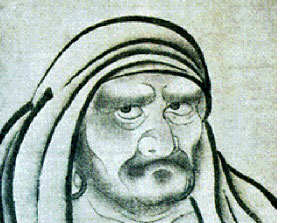
“Everything that appears in the three realms comes from the mind. Hence buddhas of the past and future teach mind to mind without bothering about definitions.”
-First Chan Ancestor Bodhidharma
What is Chan?
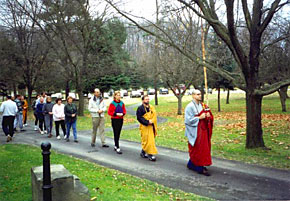
Chan, also known as Zen, is a way of looking directly at one’s own True Nature. Each of us is born, lives and dies, and yet we may go an entire lifetime without ever realizing that there’s more to ourselves than we think. Indeed, we have the capacity to come to a very direct understanding of what we really are and what our relationship to the universe around us truly is if we will just look. Chan is a way of looking, a way to focus our attention on the truth of our own life. It is direct realization of our true nature.
In order to point at this true nature we practice Chan meditation. A famous saying describes Chan practice, among others, as “a finger pointing to the moon.” The moon’s brilliance is there for all to see, and the finger points the way. The finger itself is merely a way, a path, a vehicle for us to get at the truth. The essence of Chan has little if anything to do with rites, rituals and so forth, even though these may be employed as a means of encouraging mindfulness. Chan is directly concerned with getting at the truth.
Where Chan Came From
The origins of Chan can be traced to the teachings of both Buddhism and Daoism. The ancient Chinese paid close attention to the cycles of life and their effects upon those who live in the world. Books such as the Yijing and the Dao Dejing described the nature of change and its cyclical characteristics. Thus was born Daoism, from the Chinese word Dao which means “way,” referring to the way of nature, the way of the universe. The teachings of Daoism are based on the interplay of yin (that which is yielding in nature) and yang (that which is dynamic in nature).

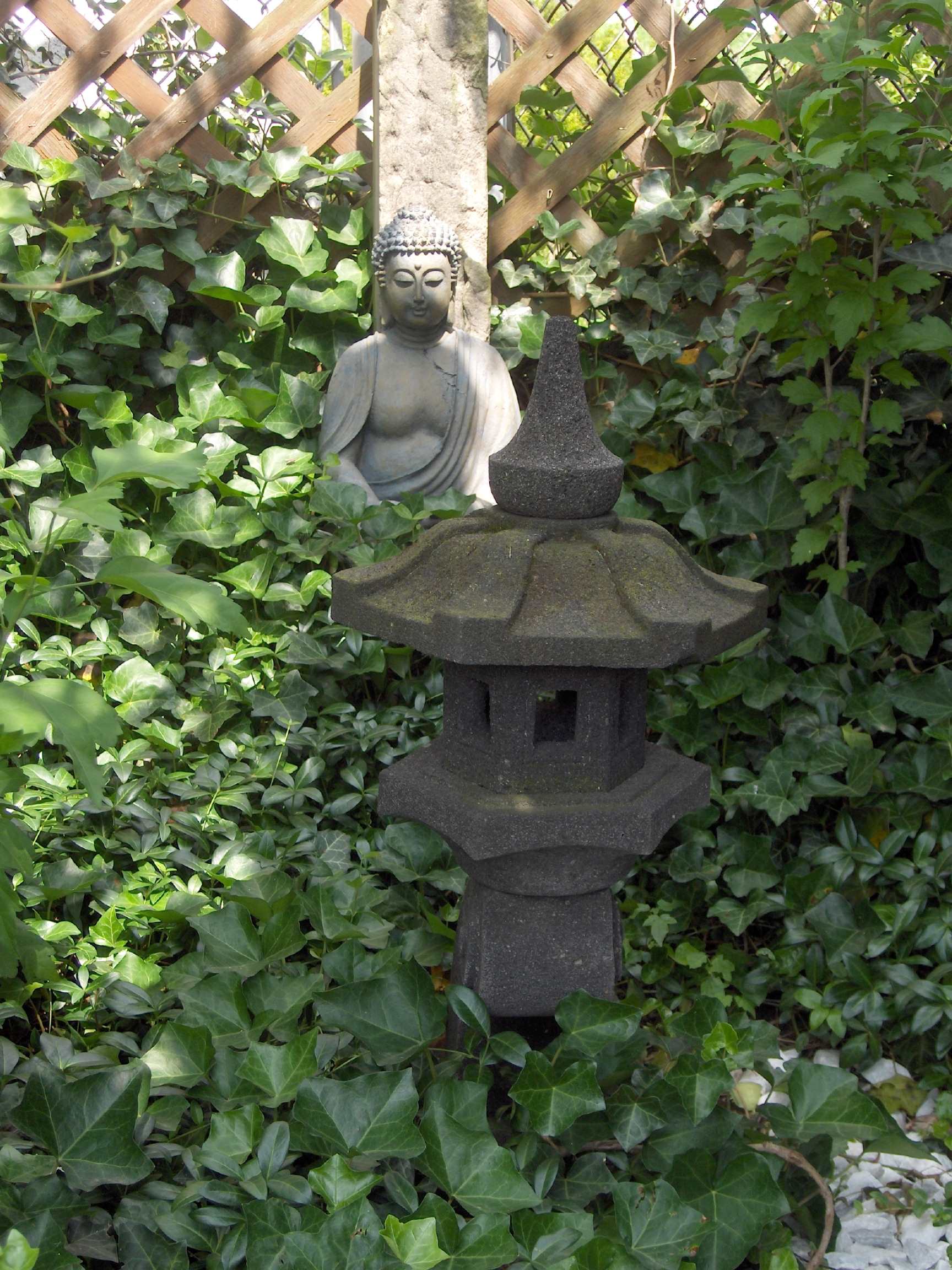
Over 2500 years ago in India, Shakyamuni Buddha began teaching the Middle Path to Enlightenment. The word Buddha means “One Who Has Awakened,” in this instance, awakened to the true nature of the universe. The Buddha taught that our life is filled with dissatisfaction and discontentment because we attach ourselves to a false notion of the way things really are. If we were able to abandon our attachment to things, he taught, we would be able to become truly one with all things; this is our true nature, our “Buddha-Nature,” our inherent capability to awaken to Universal Truth. Centuries after the Buddha’s time, the meeting of Buddhist and Daoist thought in China would form the foundation for the practice of Chan as we know it today.
Bodhidharma
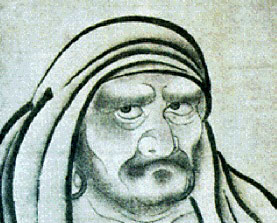
Whether or not the man named Bodhidharma actually existed is still a matter for some debate, but it is very useful in our exploration of the origins of Chan. As the legend goes, Bodhidharma was a Buddhist scholar from India who visited the court of the Chinese Emperor Wu of the Liang Dynasty in the sixth century CE. Following this visit, during which he is said to have debunked the Emperor’s view of Buddhist teachings, he traveled west and took up residence in a cave near the fabled Shaolin Monastery. He spent nine years in that cave meditating. Bodhidharma was an expert in the teachings of the Lankavatara Sutra which stressed the direct realization of one’s Buddha-Nature, and the subsequent meditative school which took root actualized these teachings.
By this time, Daoist thought was over 3000 years old and was woven into the fabric of Chinese society. Daoist and Buddhist scholars had intermingled for several hundred years before Bodhidharma’s time, and many books looking at Buddhist teachings in a Daoist way had been written. The two systems were generally considered to be very complimentary.
Bodhidharma is credited with becoming the First Ancestor of Chan. The word Chan was a Chinese pronunciation of the Sanskrit word dhyana, which referred to the Buddha’s teaching of meditative concentration. But the Chinese interpreted the word to mean “awareness.” Thus the Chan school was centered around the utilization of meditative concentration, rather than relying on sacred texts, in order to attain a direct awareness of one’s true nature.
The Spread of Chan
By the seventh century C.E., significant numbers of Chan monks were gathering in local Buddhist monasteries to practice and study. Chan emphasized direct seeing through meditative practice, as well is what is known as “mind-to-mind transmission” between teacher and student. This transmission was epitomized by the story of how the Buddha once held up a flower instead of giving a verbal teaching. His disciple Mahakashapa simply smiled, confirming that his understanding was the same as the Buddha’s.

For the next hundred years Chan grew rapidly, eventually coming to dominate the Chinese Buddhist landscape. By the beginning of the 8th century Chan had spread to Korea where it was called Son. In Vietnam it was known as Thien, and when the teachers Eisai and Dogen brought it to Japan from China it was called Zen. After some internal struggles, Zen grew rapidly in Japan, 21 of the 24 lines of Chan having been established there. After a total of 1200 years of development in Asia, the practices which stemmed from the Chan tradition were ready for another significant step: expansion to the West.
Coming to North America
Attending the World Parliament of Religions held in Chicago in 1893 was a slightly built Japanese Zen priest named Soyen Shaku. At the behest of Illinois book publisher Paul Carus, Soyen Shaku asked one of his students, Daisetz T. Suzuki, to translate some Japanese Zen texts. One of D.T. Suzuki’s writings, “A Manual of Zen Buddhism,” helped introduce the Zen tradition to Americans outside of strictly scholarly circles.
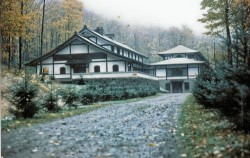
As time passed more Zen teachers began to make their way to North America, including such figures as Nyogen Senzaki, Nakagawa Soen Roshi and Sokei-an Sasaki. The daughter of Sasaki’s wife met and eventually married the noted English author Alan Watts, paving the way for him to come to the U.S. Watts, a former Episcopal clergyman, helped push Zen into the national consciousness. He coined the phrase “Beat Zen” to describe the kind of Zen practice which had become fashionable on the west coast in the 1950s. By this time, small Zen groups were forming and the number of practitioners was increasing. Watts’ most famous book, “The Way of Zen,” is credited with bringing many people to Zen practice.
Later came traditional Chan teachers like the Venerable Xuanhua, a disciple of the famous Master Xuyun. Xuanhua founded the Gold Mountain Monastery in San Francisco as well as the Sagely City of 10,000 Buddhas and a number of other Chan monasteries and temples. The noted Master Shengyen later founded the Chan Meditation Center in Elmhurst, New York. Many Chan monasteries and temples have sprung up in California and New York state as well as in Canada. Zen centers such as the San Francisco Zen Center and Dai Bosatsu Zendo in New York state continue to keep the Japanese variant of Chan vibrant and alive. Both the Chan and Zen traditions can now boast hundreds of sitting groups and dozens of monasteries in North America. Both Chan and Zen continue to grow and evolve to meet the needs of 21st-century practitioners who are seeking to actualize their True Nature.
